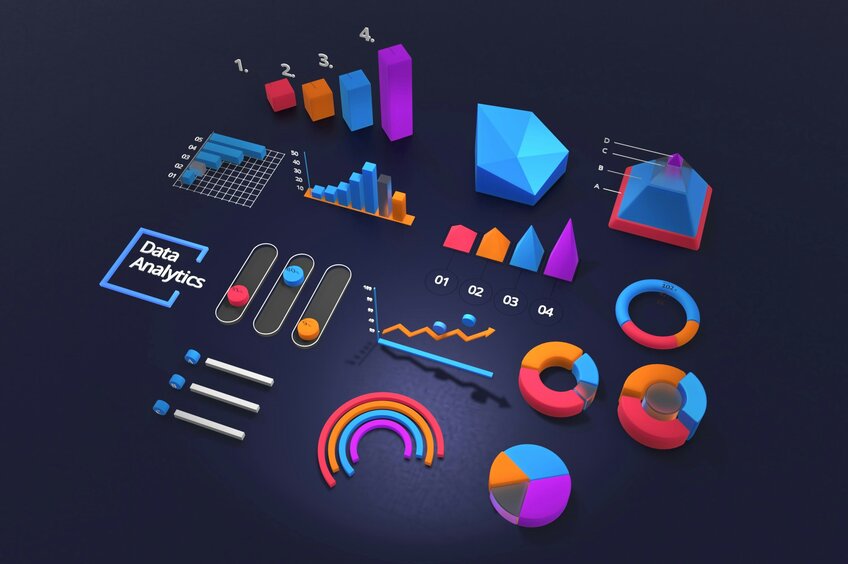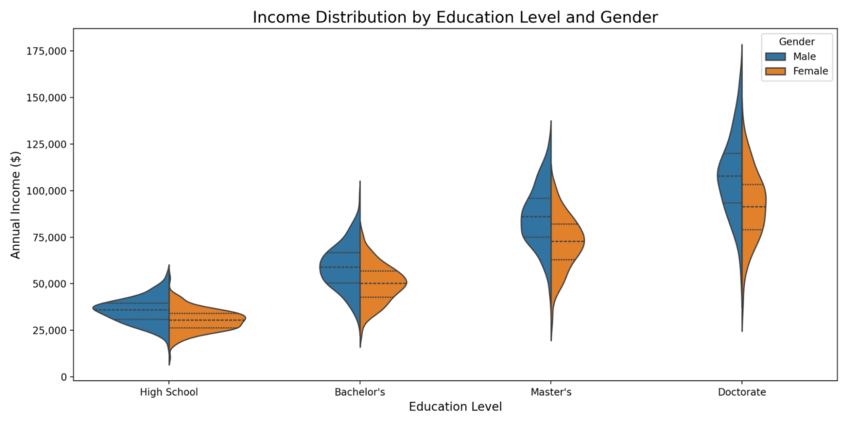September 4th, 2024
Top 5 Data Analytics Trends Impacting 2024 and Beyond
By Connor Martin · 10 min read

A staggering 181 zettabytes.
That’s how much data Statista anticipates will be created, copied, captured, and consumed globally in 2025 – a 179-zettabyte difference from the amount of data undergoing the same processes in 2010. That decade and a half showcases just how important data has become to modern society and, in turn, highlights the increasing need for data analytics.
That brings us to this article – an examination of data analytics trends for 2024 that will help us collectively parse through this ocean of data.
5 Data Analytics Trends You Can’t Ignore Today
Each of the following trends is already in play today and – in many cases – will only grow in importance as we move past 2024.
#1 - AI-Powered Data Analytics
With volume being such a massive challenge for data analysts, it stands to reason that the rise of artificial intelligence (AI) links to the top data analytics trends. How could it not? Analyzing data in minutes rather than days is a massive boon especially given that the 181 zettabytes mentioned above is far from the peak in terms of data generated and manipulated.
For instance, machine learning models that use natural language processing – such as ChatGPT – have already gained popularity for their ability to summarize large quantities of information.
On the more specialized end of the scale, you have platforms like Julius AI – a data analysis and data visualization tool that helps you extract key insights from files in seconds. These tools will become increasingly important as data analysts are swamped with more data, helping them to separate the useful from the pointless far faster than previously possible.

#2 - Edge Computing
Sticking with the concept of speed, edge computing aims to do away with the process of sending data to a centralized cloud server. That matters because these servers are typically stored off-site (often hundreds of miles away) which creates issues related to latency and bandwidth efficiency. Instead, data processing occurs as close as possible to where the data is generated – the “edge” aspect of edge computing.
In addition to the previously mentioned latency reductions and bandwidth efficiency boosts, edge computing enhances data security. Your data can be anonymized close to the source before being sent to the cloud, making it difficult for malicious parties to intercept and abuse the data.
Look for this trend to become more prevalent beyond 2024 as engineers solve issues related to edge computing having limited processing power in comparison to centralized cloud servers.
#3 - Business Intelligence and Augmented Analytics
The concept of business intelligence is hardly a modern data analytics trend – it’s existed for decades as a way to help companies forecast for the future and drive efficiency in business operations. The trend comes from the increasing use of AI and machine learning when analyzing data for businesses, which is where the augmented analytics aspect comes into play.
So, what is augmented analytics?
Using AI and machine learning, augmented analytics allows a human to interact with the data they generate and store at the contextual level. But what does this data represent? What is it showing me? Augmented analytics tools answer those types of questions, not only offering actionable insights to the user but also making access to these high-level insights more widespread and simpler.
Again, the previously mentioned Julius AI is a good example. All you need is a file and you can use Julius AI to ask questions, draw insights, and even visualize the data within that file for reporting purposes – all without needing the expertise that traditional data analysts bring to the table.
#4 - Data-as-a-Service (DaaS)
The DaaS model is somewhat similar to the Software-as-a-Service (SaaS) model. Both offer something on demand in exchange for a subscription fee – software for SaaS and data for DaaS. In fact, you could consider DaaS as a subcategory of SaaS. A DaaS platform is hosted in the cloud, with data being made available to any user regardless of the infrastructure they have in place or their location. More advanced DaaS tools even handle analysis and data management on the user’s behalf – both tasks that take up time and extensive storage.
As for why it’s a trend, we need only look at the figures. According to Future Market Insights, the DaaS sector was already worth $10.429 billion by the end of 2023. Massive growth is coming, with a compound annual growth rate of 23.4% predicted between 2023 and 2033, leading to a new market cap of $85.619 billion by the end of that 10-year period. It’s easy to see why this growth is likely given that DaaS eliminates data redundancy problems while making access to critical data more affordable.
#5 - Synthetic Data for Privacy
What if the data you generate isn’t real data at all?
It sounds like a strange concept, but that’s the root of synthetic data. It’s a form of data that computer algorithms or simulations can generate as an alternative to real-world data, using that real data as a “template” of sorts for the synthetic data they produce. The concept uses machine learning models to analyze and understand how a real-world dataset is structured, allowing it to generate synthetic data based on the same rules. Not only will this data look similar to the real-world dataset, but it will contain the same statistical relationships seen in that set.
Enter the concepts used in fields like finance, healthcare, and the legal sector, among others. Any industry that has staunch privacy laws must be wary of using real-world data for analytics and research. Synthetic data solves that problem – the artificial data generated doesn’t contain real information but is structured in the same way as a real dataset. Thus, statistical analysis becomes possible in these heavily regulated industries without placing real-world consumers at risk.
Want to Get Ahead of the AI Crowd? Start Using Julius AI Today for Faster Data Analysis and Visualization
Each of these data analytics trends gives you a taste of where the field is heading in the future. AI and machine learning are going to be key drivers – they’re already being used to generate synthetic data and to provide augmented analytics.
If the latter use is something that interests you, that means you’re looking for faster analysis and better data visualization – both things you get when you use Julius AI.
The platform enables you to “chat” with your files and datasets, with no coding required to extract insights and develop the visualizations you need for reports. Sign up today and join over one million users in simplifying how you analyze data.
Frequently Asked Questions (FAQs)
What is the future of data analytics?
The future of data analytics lies in automation, scalability, and accessibility, driven by advancements in AI and machine learning. Tools that enable real-time insights, predictive modeling, and natural language interaction with datasets will become increasingly essential as data volumes continue to grow exponentially. Expect more industries to adopt analytics to drive efficiency, innovation, and customer-centric strategies.
What is the latest trend in data?
AI-powered analytics is one of the latest and most transformative trends in data. With platforms leveraging natural language processing and machine learning, businesses can process and interpret vast datasets faster than ever, uncovering actionable insights with minimal human intervention.
What is a common trend in data analysis for 2024?
Augmented analytics, which combines AI and machine learning to enhance data interpretation, is a prominent trend for 2024. This approach democratizes analytics, allowing non-technical users to interact with and gain insights from their data more easily, all while improving the speed and accuracy of analysis.
